Writing Teaching Resources
Teaching writing strategies and the writing process this school year? Explore a comprehensive collection of teacher resources for primary English teachers — all created by teachers!
Stocked with graphic organisers, writing prompts, templates, worksheets and so much more, this collection of printable and digital activities is designed to help you as you help your students become more effective communicators and unleash their creativity and imagination.
Save time on lesson planning with resources that are aligned with the Australian curriculum (including version 9!) and have been through a careful review process by an expert member of our teacher team to ensure they're ready for your classroom and your students!
Are you looking for tips and tricks to add to your teacher toolkit this school year? Read on for a primer from our teacher team, including engaging activities for teaching writing inprimary school and a look at some of the different writing strategies your students will need to learn.
11 Writing Strategies Kids Should Know by the End of Primary School
We can't talk about teaching kids to write without talking about the different writing strategies that can help them do just that!
When it comes to teaching our students to become confident writers who articulate their ideas effectively, here are some of the strategies our teacher team prioritises:
1. Brainstorming
Brainstorming is something we often do in the classroom, and it's a crucial part of learning to generate the ideas that will drive students' writing as they progress through their educational journey. Kids should know how to create a list of potential topics or points related to a particular writing assignment.
With younger students, this is often done as a whole group by writing ideas and points on chart paper. In upper years, students transition over to using text-based materials to generate ideas and talking points.
2. Outlining
Before diving directly into any assignment, our students should be able to create a structured framework or outline. Teaching students how to create this outline will help them organise their thoughts and arguments for penning their essays, reports and research papers.

3. Using Graphic Organisers
Technically graphic organisers are classroom tools, so you may not think of their use as a writing strategy per se. However, learning to use these tools is another means of providing kids with the tools they need to organize their ideas and information before they sit down to write.
These organisers are particularly useful for expository writing — students can use them to outline main ideas, supporting details, and transitions.
Students can also take advantage of story maps when they are working on narrative writing to plot the key elements of a story, such as characters, setting, conflict, rising action, climax and resolution.
Graphic organisers such as the OREO strategy and hamburger paragraph are also great tools for students to use when working with opinion and persuasive texts.
4. Freewriting
Writer's block is the enemy of creativity, and it can easily frustrate young students who don't know where to begin.
When students freewrite, they write continuously without worrying about grammar or punctuation. This writing strategy can be extremely freeing — hence the name! — and helps frustrated writers move past that writer's block, generating fresh ideas.

5. Peer Editing
Learning to review and provide constructive feedback on each other's work is a great writing strategy to employ in your classroom to help students improve their writing quality and enhance their editing skills.
The strategy allows your students to learn from one another, and it arms them with an important tool they can use well into the future — calling on peers to provide a critical eye to a piece of writing.
6. Using Sensory Language
Working on descriptive writing? With this writing strategy, students engage the reader's senses through vivid and sensory language to create a more immersive experience.
7. Including Transitions and Connectives
As students become more proficient in the writing process, learning to use transitional words and phrases allows them to create smooth transitions between sentences and paragraphs. This strategy makes their writing more coherent and polished.
8. Incorporating Evidence
In persuasive, opinion and expository writing, students are taught to support their claims with evidence and examples to strengthen their arguments.
It takes some practice to train your students to use evidence in their writing, so it's often a good idea to start with something simple, like the R.A.C.E.S. strategy.
9. Crafting a Thesis Statement
In expository, opinion and persuasive writing, crafting clear and concise thesis statements that summarise the main point or argument of their essay helps students be more focused and organised in their writing.
This strategy can also have the effect of empowering students to express their ideas confidently and persuasively.
10. Incorporating Introductions and Conclusions
With this strategy, students practice crafting effective introductions and conclusions that grab the reader's attention and leave a lasting impression.
11. Following a Revision Checklist
Teaching your students to use a revision checklist is a strategy that will help them be more self-reflective, evaluating their own writing against the checklist criteria and becoming more aware of their strengths and weaknesses.

- Plus Plan
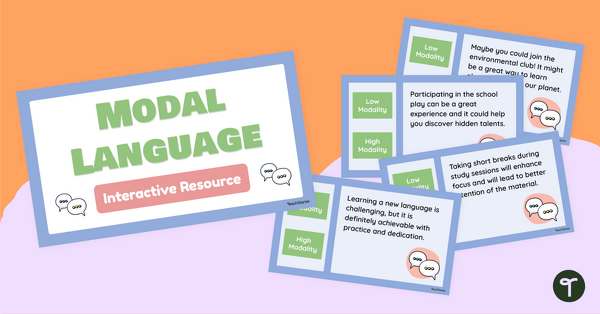
Modal Language Interactive Activity
Explore the language of modality with your students using this digital game perfect for your persuasive writing lessons.
- Plus Plan
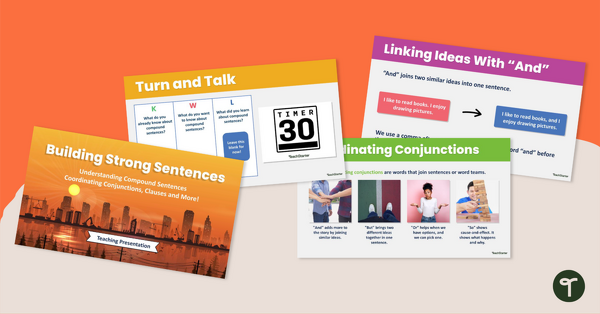
Building Strong Sentences Teaching Presentation
Share this 15-slide teaching presentation with your students to help them understand the key grammar concepts of compound sentences,coordinating conjunctions and clauses.
- Plus Plan

Subordinating Conjunctions Game Show Interactive Activity
Use this interactive digital activity to assist your students in practising identifying and constructing sentences using subordinating conjunctions in a fun way!
- Plus Plan
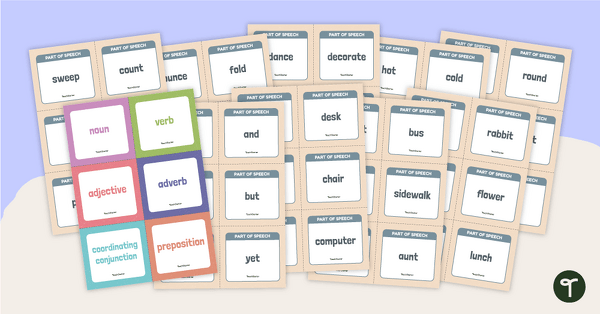
Parts of Speech Word Cards Sorting Activity
Engage your students with this parts of speech group activity where they sort 112 word cards into categories (nouns, verbs, adjectives, adverbs, coordinating conjunctions or prepositions).
- Plus Plan
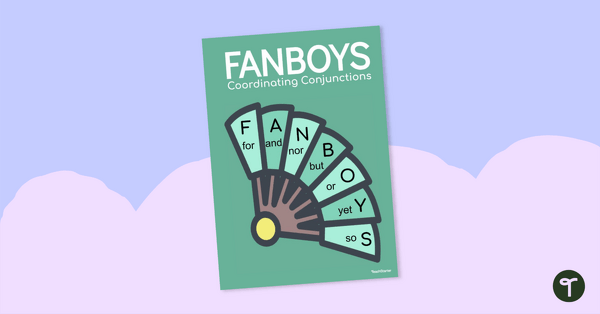
FANBOYS Poster for Teaching Coordinating Conjunctions
Display this grammar poster in your classroom to help students choose appropriate coordinating conjunctions using the acronym FANBOYS.
- Plus Plan
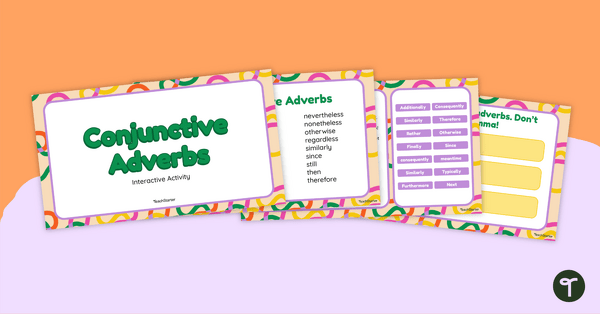
Conjunctive Adverb Interactive Activity
Use this engaging interactive activity in your classroom to teach students what conjunctive adverbs are and how to use them in their writing.
- Plus Plan

Interesting Events Adverb Groups Worksheets
Use this set of differentiated grammar worksheets to help students incorporate adverb groups or phrases into their writing.
- Plus Plan
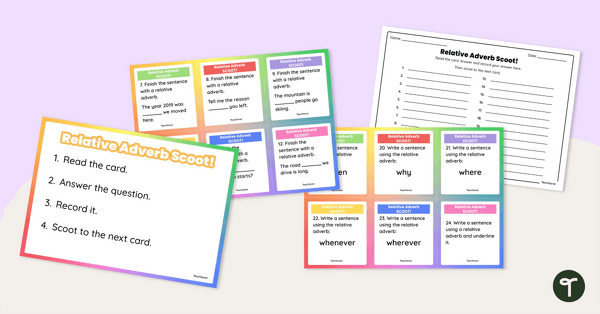
Relative Adverb Scoot Game
Use this relative adverbs scoot game as a warm up or active learning activity to add some colour to your grammar lesson!
- Plus Plan
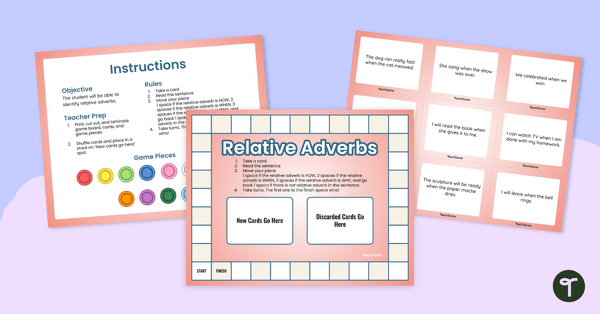
Relative Adverbs Game
Incorporate this relative adverbs board game into your literacy rotations or as a fast finisher activity to reinforce the concept of relative adverbs.
- Plus Plan
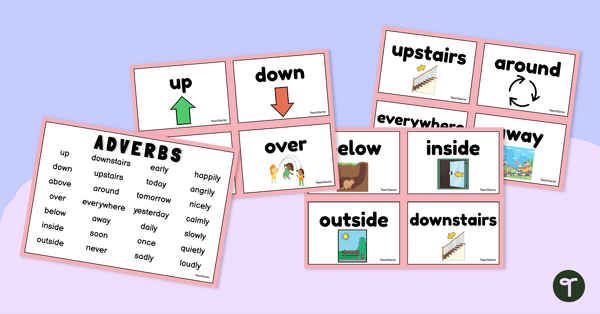
Adverbs Drama Game
Enjoy this fun drama game with your students as you teach them that adverbs describe how, when or where a verb is happening!
- Plus Plan
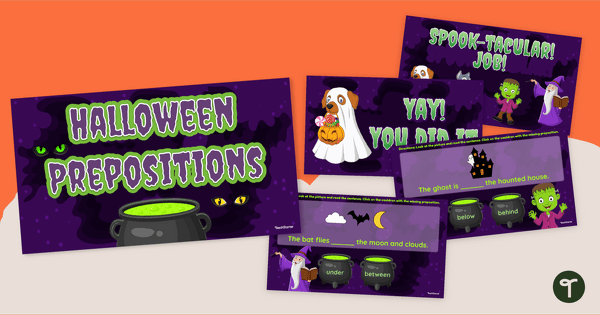
Interactive Halloween Preposition Game
Use this interactive Halloween preposition game to review some spooky grammar skills.
- Plus Plan

Nonfiction Text Features – All About Me Project
Implement a text features project with an “All About Me” theme to explore informational text features with your students.
- Plus Plan
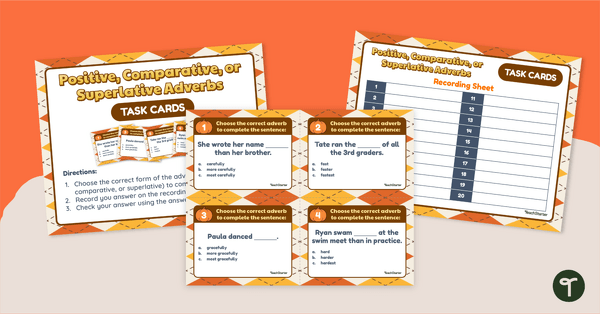
Positive, Comparative, and Superlative Adverbs Task Cards
Use these task cards to help students practise using positive, comparative, and superlative adverbs in sentences.
- Plus Plan
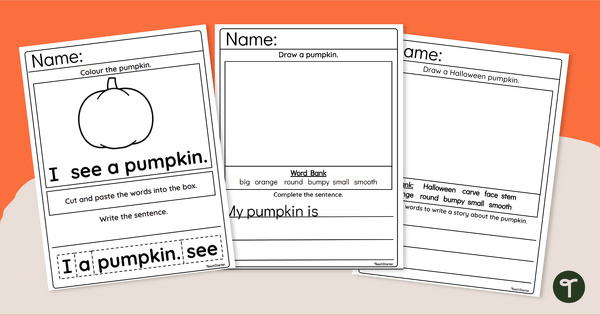
Write About It! Pumpkins - Differentiated Writing Prompts
Differentiate writing instruction in year 1 with a group of levelled informational writing prompts about pumpkins.
- Plus Plan
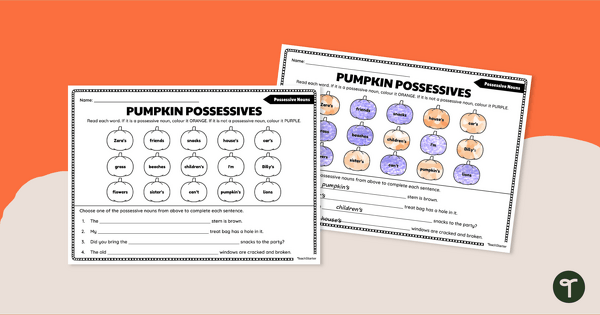
Pumpkin Possessives Worksheet
Practise identifying possessive nouns with this pumpkin-themed worksheet.
- Plus Plan
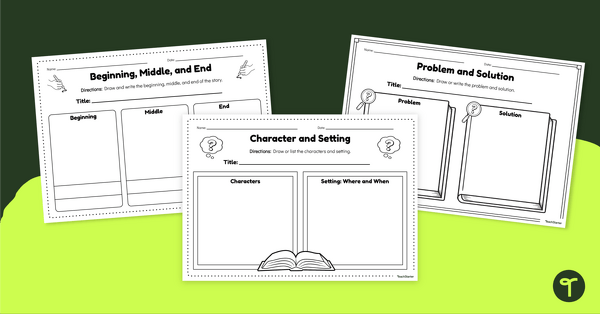
Narrative Elements Graphic Organisers – Landscape
Encourage your students to write and draw about various story elements with this set of differentiated graphic organisers.
- Plus Plan
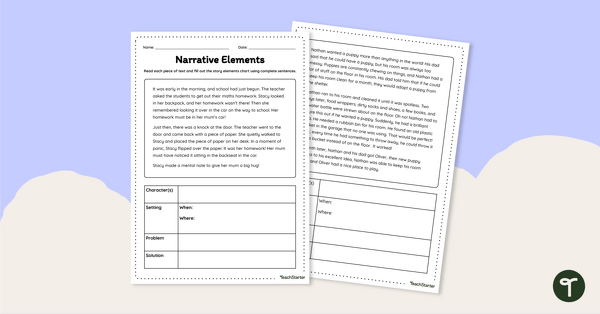
Narrative Elements - Worksheet
Practise identifying characters, settings, problems and solutions in fictional texts with this set of worksheets.
- Plus Plan
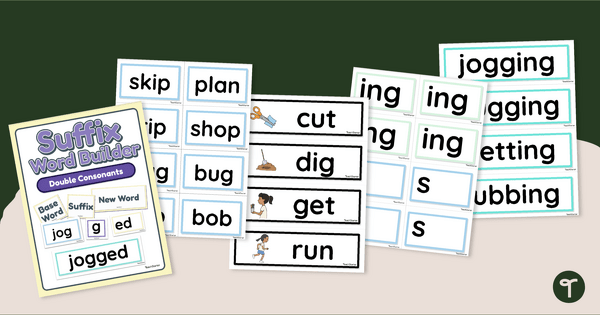
Spelling Double Consonant Words - Word Building Cards
Practise spelling and building words that need double consonants when adding suffixes with a word-building activity.
- Free Plan
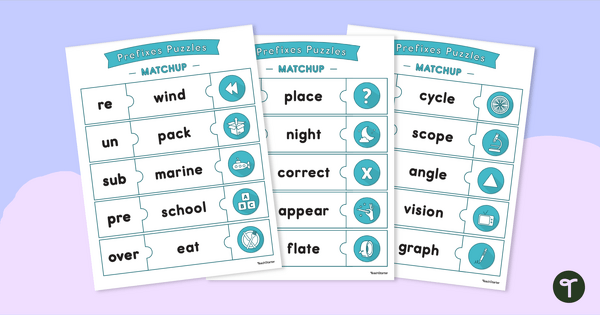
Prefix Puzzles - Match Up Cards
Practise building, reading, and understanding the meaning of words with prefixes with a fun set of prefix puzzles.
- Plus Plan

Google Slides Interactive - Prefixes Activity
Practise adding prefixes to words by identifying, defining, and matching them in context.
- Plus Plan
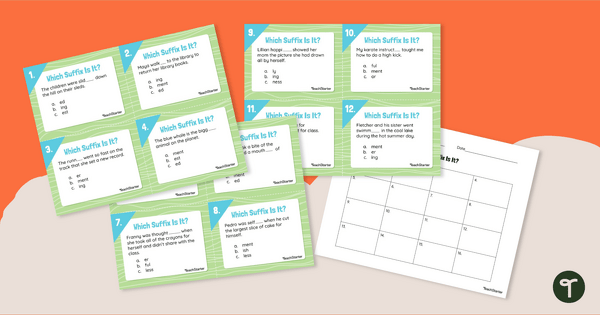
Which Suffix is it? - Task Cards
Practise using suffixes in sentences with a set of printable suffix task cards.
- Free Plan
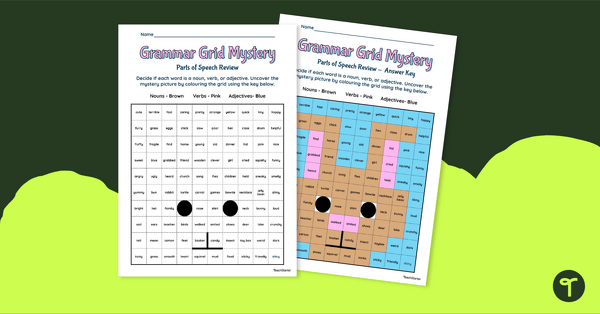
Grammar Grid Colour by Code - Easter Parts of Speech Worksheet
Follow the colour-coded parts of speech guide to fill in the word grid and reveal a mystery image.
- Plus Plan
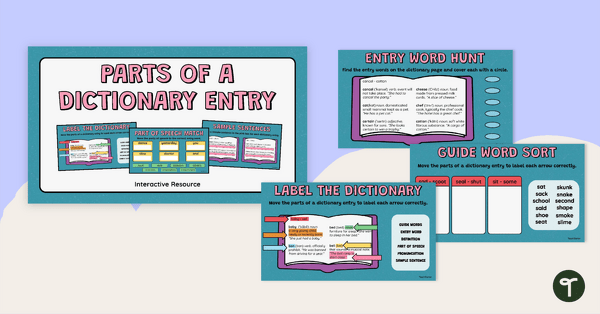
Dictionary Skills Interactive Activity
Practise dictionary skills with this engaging interactive activity.
- Plus Plan
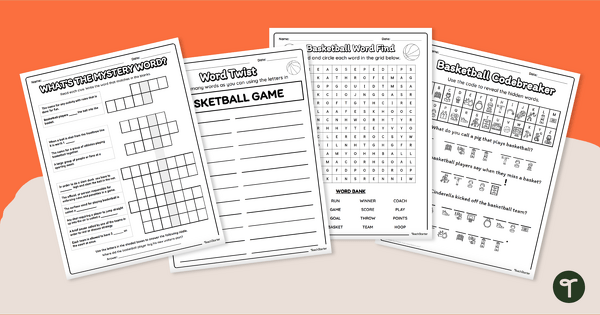
Basketball Word Fun Worksheets
Have a bit of word-friendly fun with your sports fanatics using a pack of basketball themed worksheets.
- Plus Plan
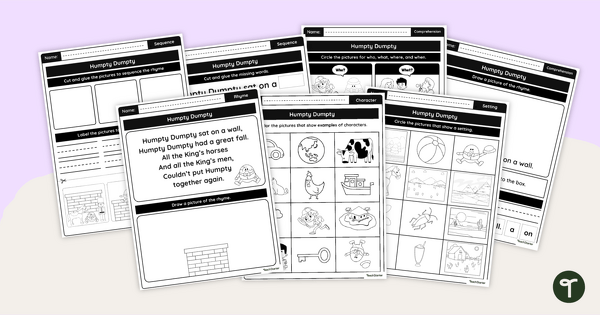
Narrative Features Worksheets - Humpty Dumpty
Identify characters, settings and parts of a story with early years reading worksheets featuring the Humpty Dumpty nursery rhyme.
- Plus Plan
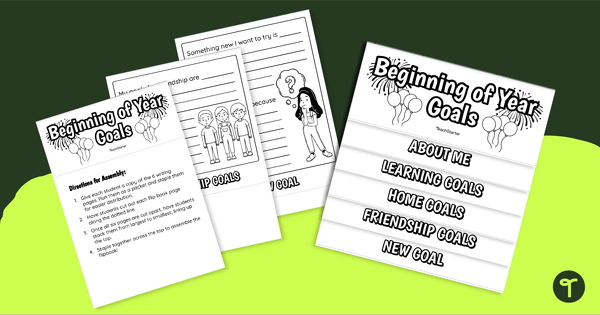
New School Year Goal Setting Flipbook
Inspire your students to reflect and set goals for the new school year with a Goal Setting flipbook template.
- Plus Plan
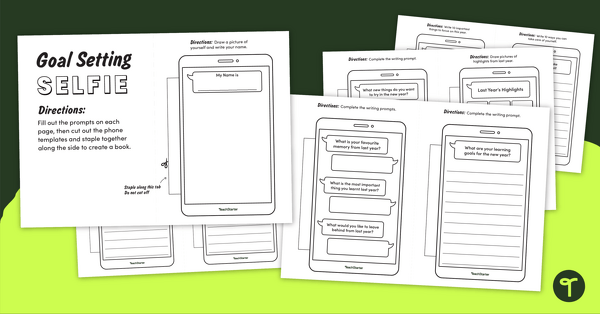
New Year's Goal Setting Selfie
Inspire your students to reflect and set goals for the new year with a Goal Setting Selfie New Year Craft.
- Free Plan
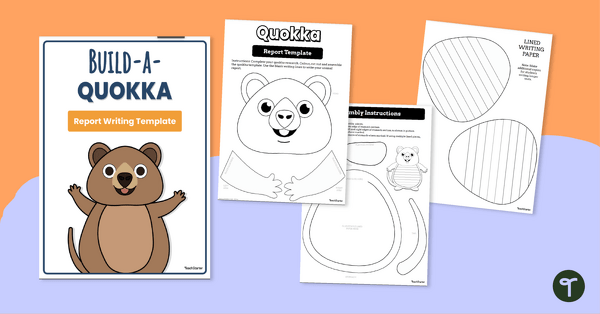
Build-a-Quokka Report Writing Template
Research, write and create a quokka report to build informational writing skills.
- Plus Plan

Has/Have, Do/Does Subject Verb Agreement - Interactive Activity
Embed subject-verb agreement practice into digital learning with this interactive activity.
- Plus Plan
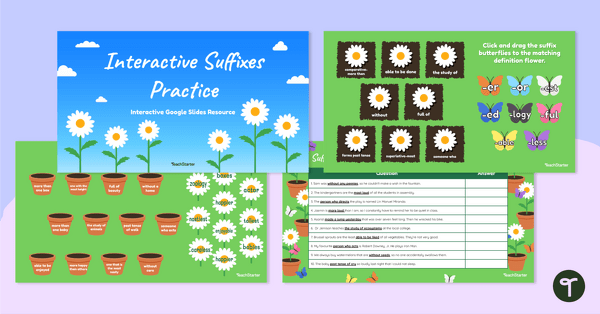
Suffix Practice - Interactive Activity
Practise adding suffixes to words by identifying, defining and matching them in context.
- Free Plan
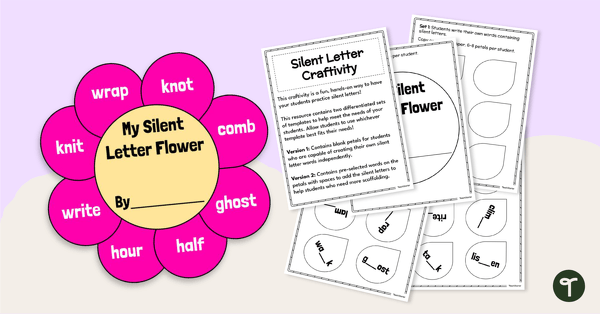
Silent Letter Craft Activity
Explore silent letters in a new and unusual way with this creative craft activity.
- Plus Plan
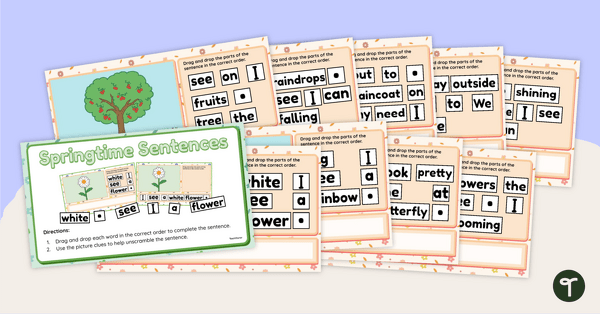
Springtime Sentence Building - Interactive Activity
Build a strong sentence-writing foundation with this interactive spring-themed sentence building activity.
- Writing Worksheets
- Writing Templates
- Writing Games
- Writing Posters
- Writing Teaching Presentations
- Writing Labels, Signs & Decorations
- Writing Word Walls
- Writing Projects
- Writing for Preschool/Kindergarten
- Writing for Foundation Year
- Writing for Year 1
- Writing for Year 2
- Writing for Year 3
- Writing for Year 4
- Writing for Year 5
- Writing for Year 6
- Writing for Year 7